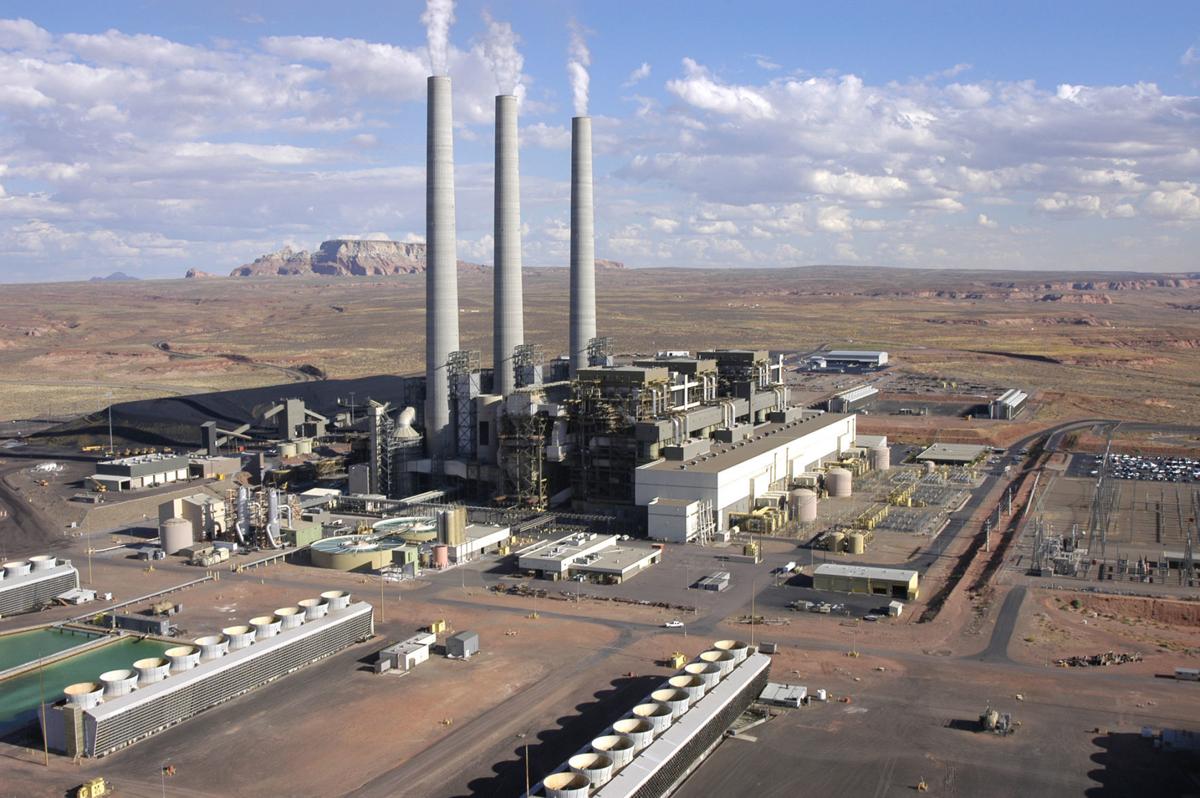Solar power advocates say a 250-megawatt renewable-energy facility could be in place in time for the late-2019 closure of the Navajo Generating Station, if permitting and construction began right away.
But that’s too soon for the Navajo and Hopi, who hold hope that the coal-fired power plant in Page – and its close to 1,000 mining and plant jobs, most held by tribal members – will be around well beyond 2019.
“Between the mine and NGS we have over 3,000 indirect jobs,” said Meghan Cox, a spokeswoman for the Navajo Nation. “A solar field won’t come even close to that.”
Bullish solar advocates are quick to point to a January report from the Department of Energy that said more than 370,000 people were employed in solar in 2016 compared to around 160,000 in coal.
But those jobs aren’t exactly sustainable. Jessie Audette Muniz, senior director of project development for Apex Clean Energy, said that construction of a solar plant would employ about 750, but operation would only take about 45 workers.
“It’s a function of this type of technology,” she said.
She said the plant would generate revenue through lease payments on the land needed for a solar field and have a “low resource impact in an area that’s been severely impacted by coal generation.”
A 250-megawatt plant capable of producing 500 gigawatt hours of energy a year would generate land-lease payments of $500 to $600 per acre per year, Muniz said, which could total about $1.1 million a year.
She said it would take about $325 million to build a solar plant of that capacity – and 10 such fields would be necessary to meet the generation capacity that would be lost if NGS shuts down.
Muniz said Salt River Project, which operates and partly owns the plant, has interest in renewables. It recently said it would purchase power from NextEra’s planned 20-megawatt-capable solar plant with 10 megawatts of storage in Pinal County – a format Muniz said would be likely for a solar plant in Page in order to ensure consistent power is available, addressing a frequent criticism of solar fields.
An SRP spokesman said the utility is in talks with the Interior Department on the future of the land on which NGS sits, though he emphasized that the company would not be involved in any operations there after 2019.
“The land that NGS sits on may be attractive for future solar development,” said Scott Harelson of SRP. “We will fully support the Navajo Nation if they should choose another operator for the plant or a transition to renewable energy at the site. … We could consider purchasing energy from any new facility at NGS in the future if the price is similar to other resources available on the market.”
But he said solar would be unlikely to fully replace the power generated by NGS, as coal-fired plants produce around the clock, whereas solar is limited by literal outside factors — sunshine.
Cox said the Navajo have not rejected solar, but the tribe wants to consider other options, including a 10-year extension on the NGS lease so the tribe can examine other revenue streams and power options. That would include getting access to transmission lines needed to sell power generated there.
Cox said over $180 million is tied to salaries related to NGS and the Kayenta mine that supplies it with coal.
“We have retained energy experts to specifically work on those plans,” she said. “As far as anything concrete, that’s up in the air. It depends on what the federal government allows. But discussions include major a solar field in the Page area. It’s part of the long-term plan.”
It’s still not an ideal replacement, one official said.
“The bottom line is, we can definitely install a solar plant in Page and connect it to the grid,” Jackson Brossy, executive director of the Navajo Nation Washington Office, said in an email. “We would love to do so, and we would love to sell solar electricity to Arizona, California and Nevada customers.
“However it is nearly impossible to replace the 3,000 NGS-related jobs with 3,000 solar-related jobs – not to mention the tens of millions of dollars from coal revenue,” Brossy said.
A solar facility in Page, even one big enough to match the wattage lost by the NGS closure, is “certainly doable,” said Kris Mayes, a professor of utility law and energy policy at Arizona State University and a former chair of the Arizona Corporation Commission.
“I would hope that the state’s utilities would do everything in their power to allow the Navajo Nation to develop renewable energy as a potential replacement to NGS if it’s closed,” she said.
Mayes agreed that solar doesn’t employ nearly as many in the long run as a coal-fired plant, but said clean energy is still a worthy goal.
“Building renewable energy, helping the Navajo and Hopi nations build and operate renewable energy is only the first step,” she said. “The state of Arizona is obligated to do much, much more than that to replace those jobs. That’s going to go beyond the energy field.
“Let’s put it this way: The ratepayers of Arizona have benefited from the cheap power of NGS for decades, and we owe it to these nations to assist them,” Mayes said.





